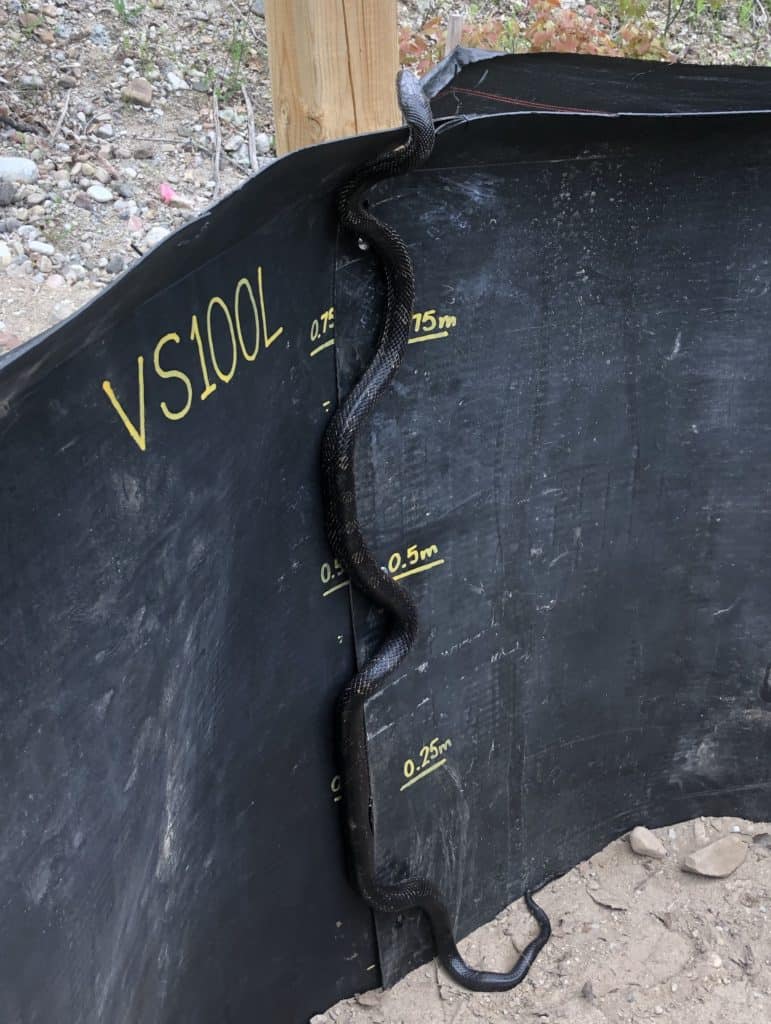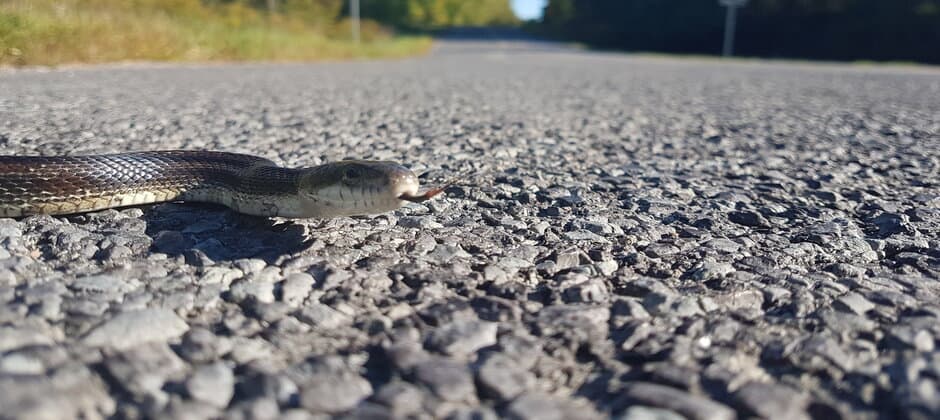Share this article
Building a better wall to keep ratsnakes off the road
Researchers in Ontario are looking into whether a great wall could keep snakes from getting onto highways that can be lethal to them.
Canada’s two populations of gray ratsnakes (Pantherophis spiloides) are protected under the Committee on the Status of Endangered Wildlife. The Western population found in southwestern Ontario is considered endangered. The eastern population in the province’s southeast is considered threatened.
Roads present a significant threat to both populations. Individuals cross them as they move around their range or lay on the asphalt to absorb the stored heat at night. Current fencing hasn’t been very effective in keeping the snakes — which can measure up to 2 meters long — off the road.
“They are semi-arboreal — they are very, very good climbers,” said Matthew Macpherson, a PhD candidate at the University of British Columbia Okanagan. “They don’t need to wrap around a tree to get to the top, they can just climb straight up using the small grooves in the bark.”
As the Ontario Ministry of Transportation plans to extend a highway through the Frontenac Arch Biosphere Reserve between Kingston and Ottawa, the agency wanted to find the most effective fences to keep snakes off the road. It funded Macpherson’s master’s project while he was studying at Queen’s University.

A snake navigates its way up a vinyl barrier set up in experiments. Credit: Matthew Macpherson
Macpherson and his colleagues set up a circular experimental enclosure using different types of fencing. They tried smooth vinyl sheeting and wire mesh at 2 feet high and 3 feet high, and they varied between using lips or overhangs at the tops and not using any. All told, they tested eight different fence setups.
The researchers then captured wild gray ratsnakes and put them in the different circular corals. They observed the snakes’ behavior, and tested whether they could escape and how many times they tried to climb the fences in 30-minute windows.
According to the research published recently in Global Ecology and Conservation, the best setup involved taller wire mesh fences with lips. Only one out of 15 snakes managed to escape them.
The lips only seemed to matter on the wire mesh, Macpherson said, and the height was key. Two feet wasn’t high enough to stop snakes that often measured more in length.

Researcher Matthew Macpherson holds a gray ratsnake. Credit: Courtesy Matthew Macpherson
The snakes’ behavior also seemed to change based on the material, Macpherson said. On the solid black vinyl material, the snakes attempted to climb right away. The wire mesh, on the other hand, is partly see-through, and the snakes spent more time slithering around the bottom seeing if they could find a way through, similar to the behavior of snakes in zoos behind glass enclosures.
“This shows you can create a strategy with less material that’s cheaper by exploiting the behavior of the animals,” Macpherson said. “I thought that was a really cool result.”
The study also provides an update to previous Ministry of Transportation recommendations for 2 meter fences, he said.
But the fencing may not be as effective if it isn’t combined with wildlife passages. Snakes such as the yellow-bellied racer (Coluber constrictor mormon) have been observed to die from exhaustion while traveling along roadside fences.
“I don’t see fencing nearly as effective without passages,” he said.
Header Image: Gray ratsnakes face danger from sunning themselves or crossing on roads. Credit: Matthew Macpherson








